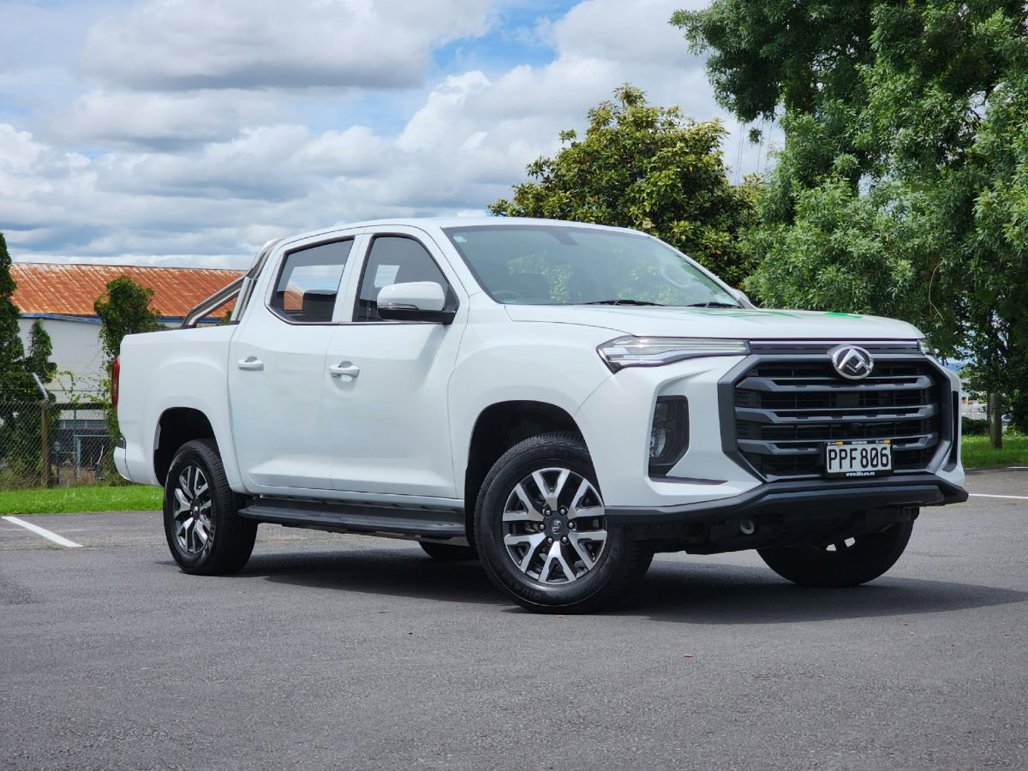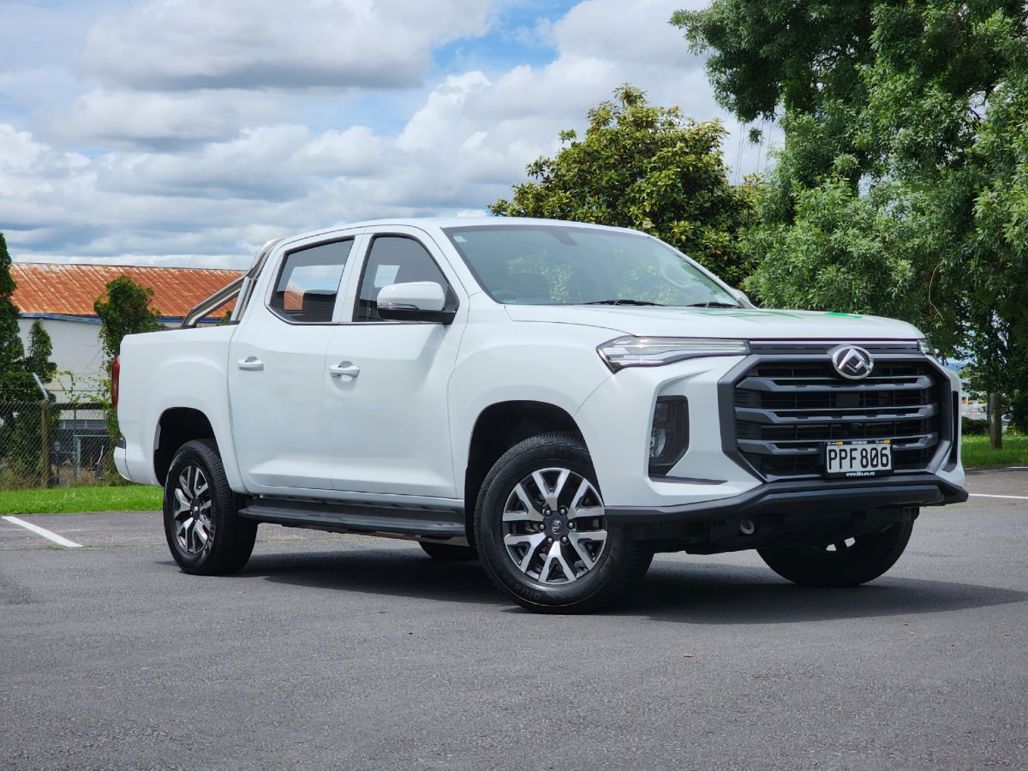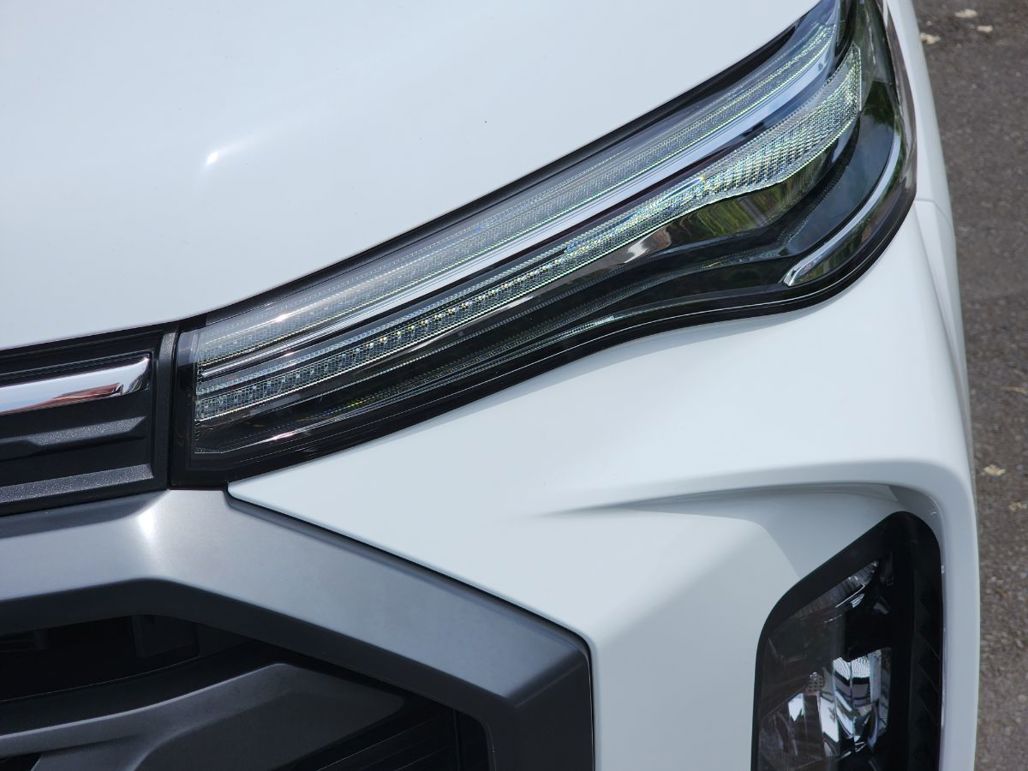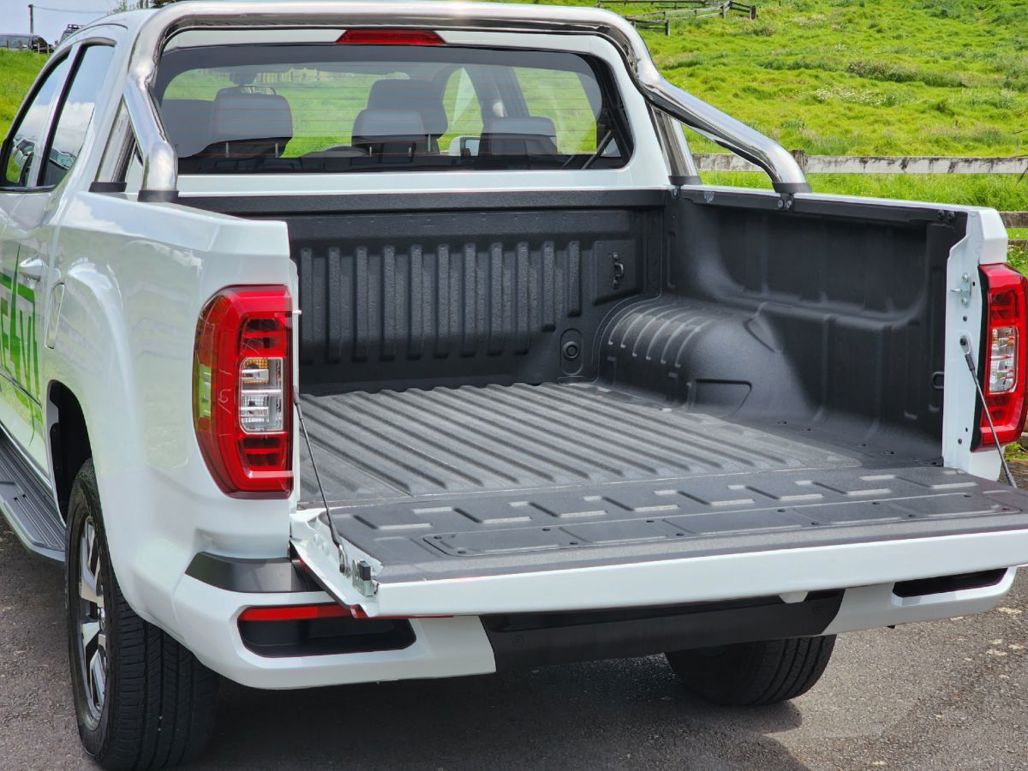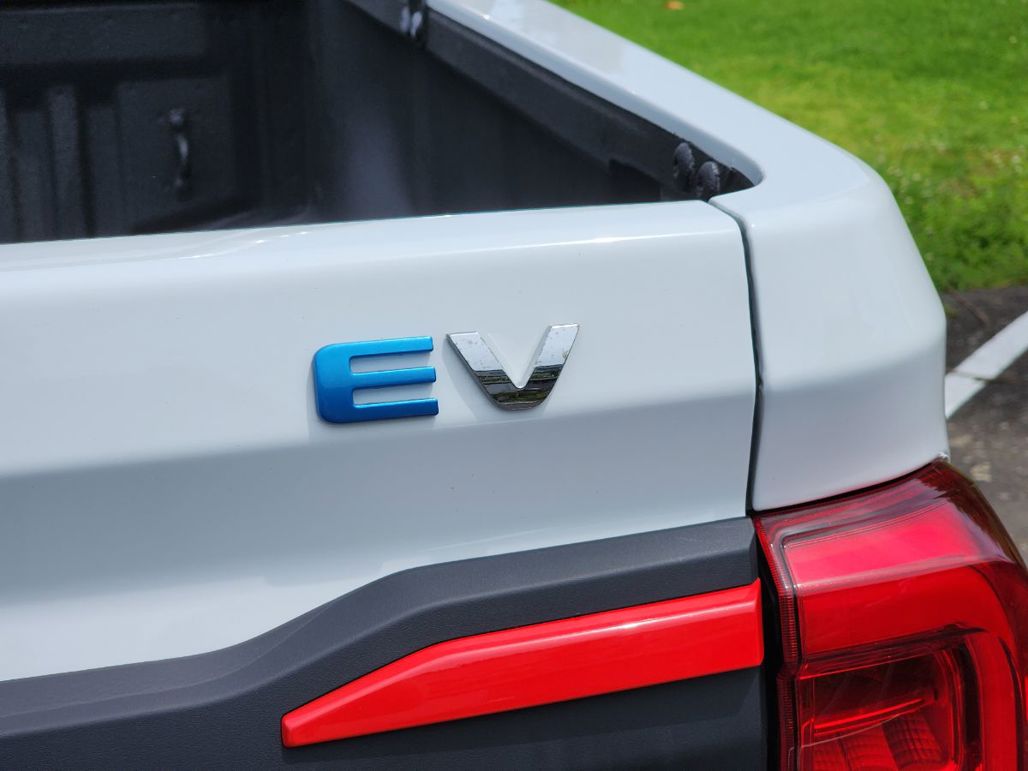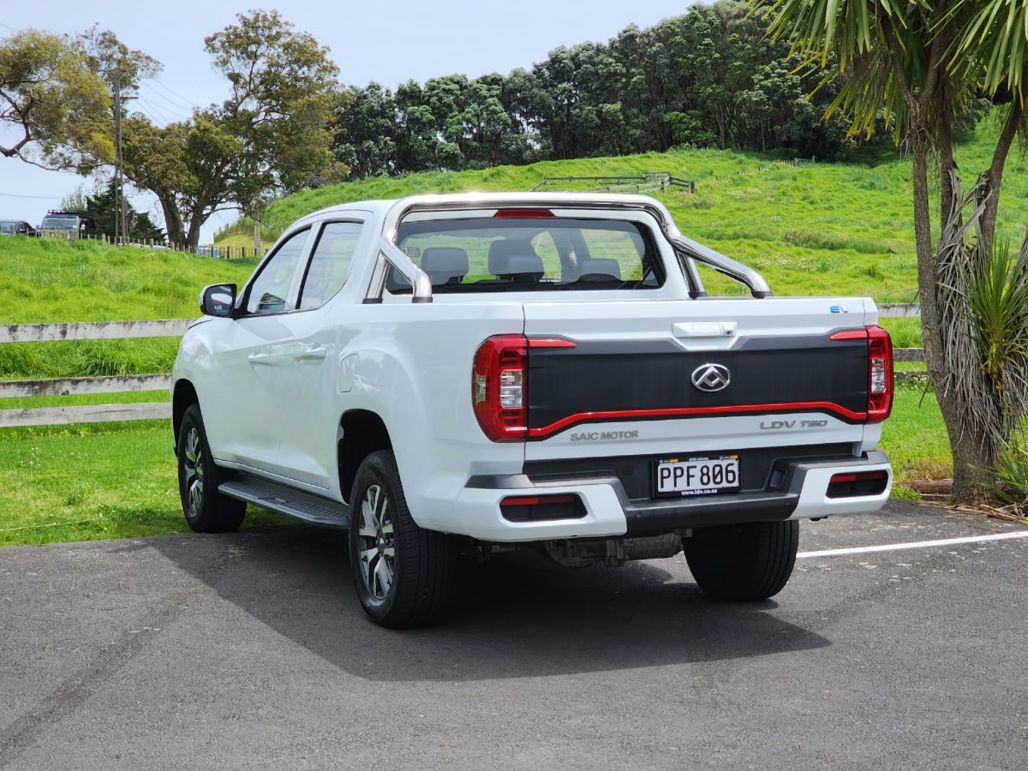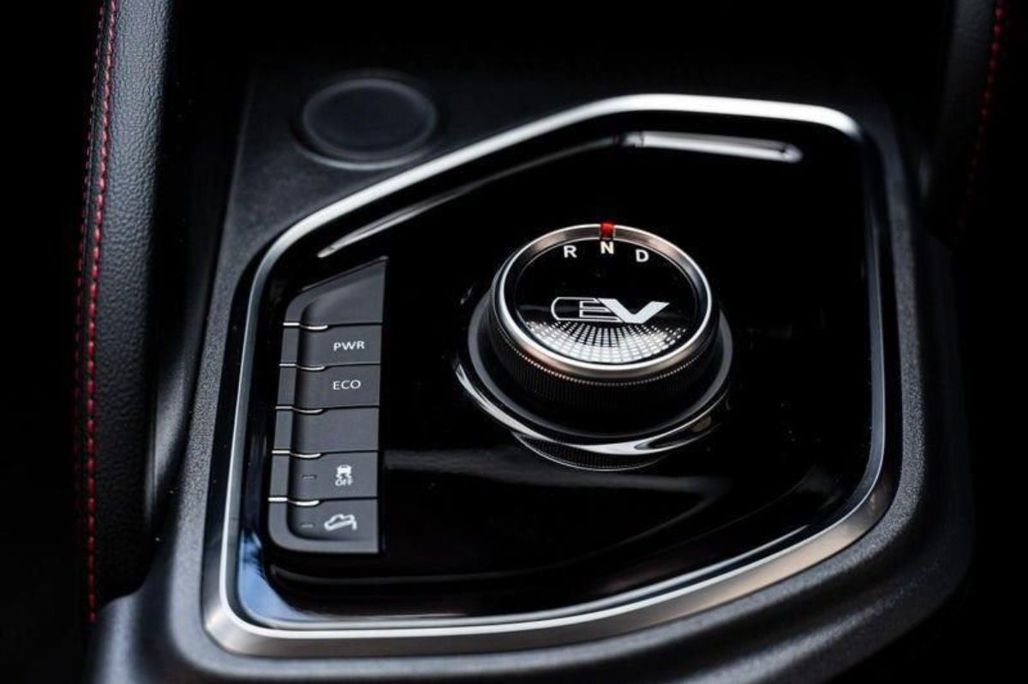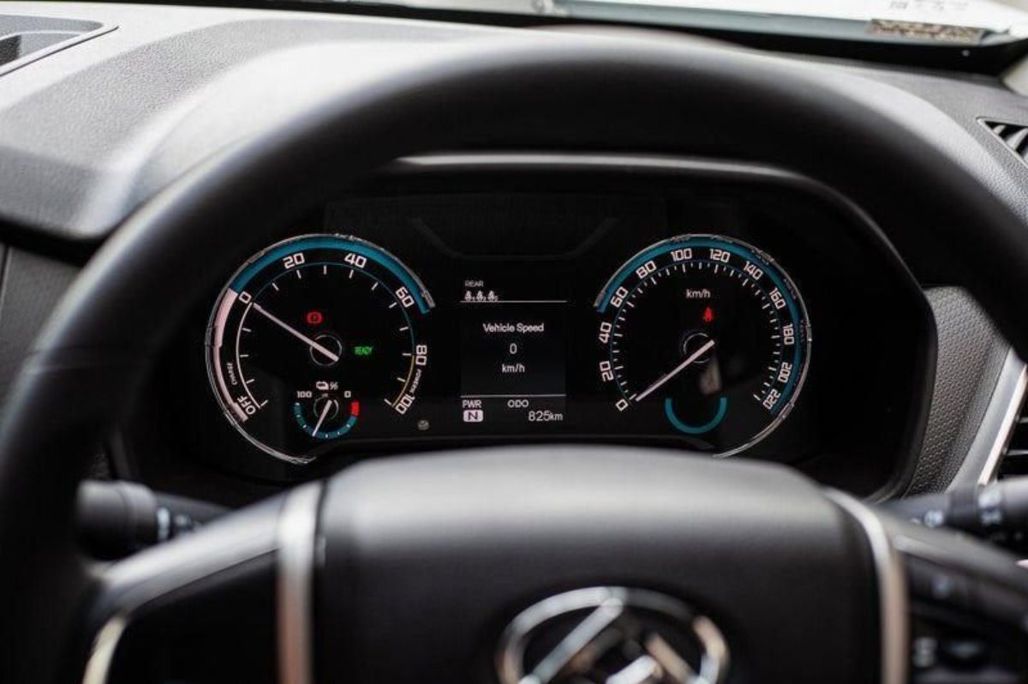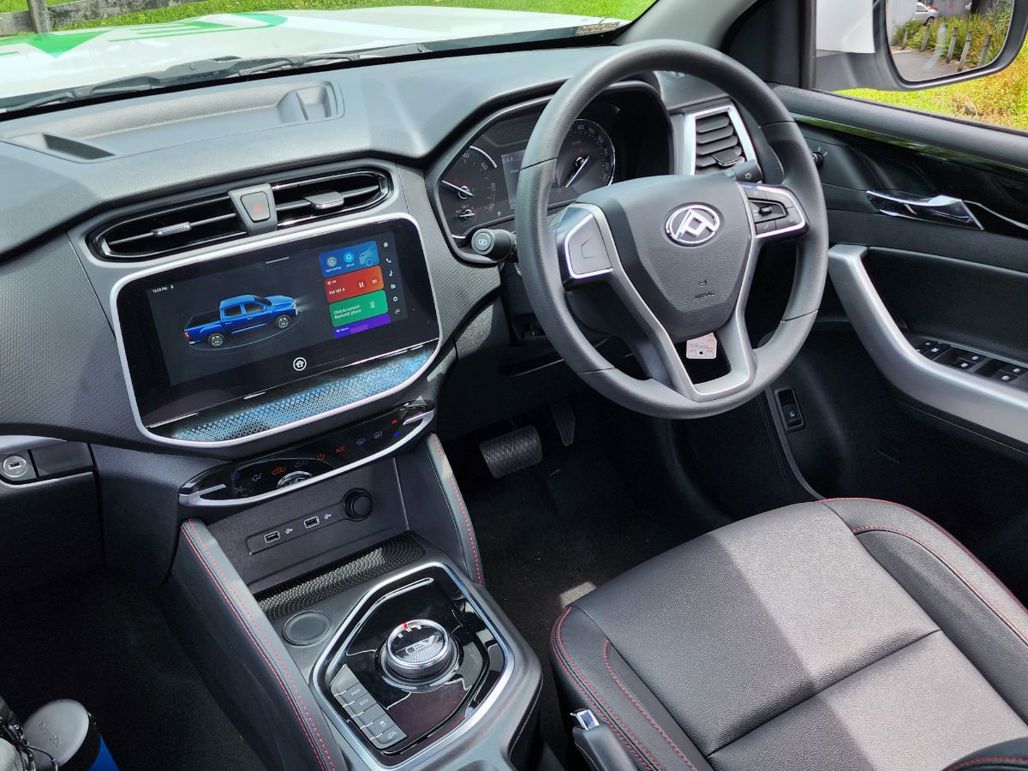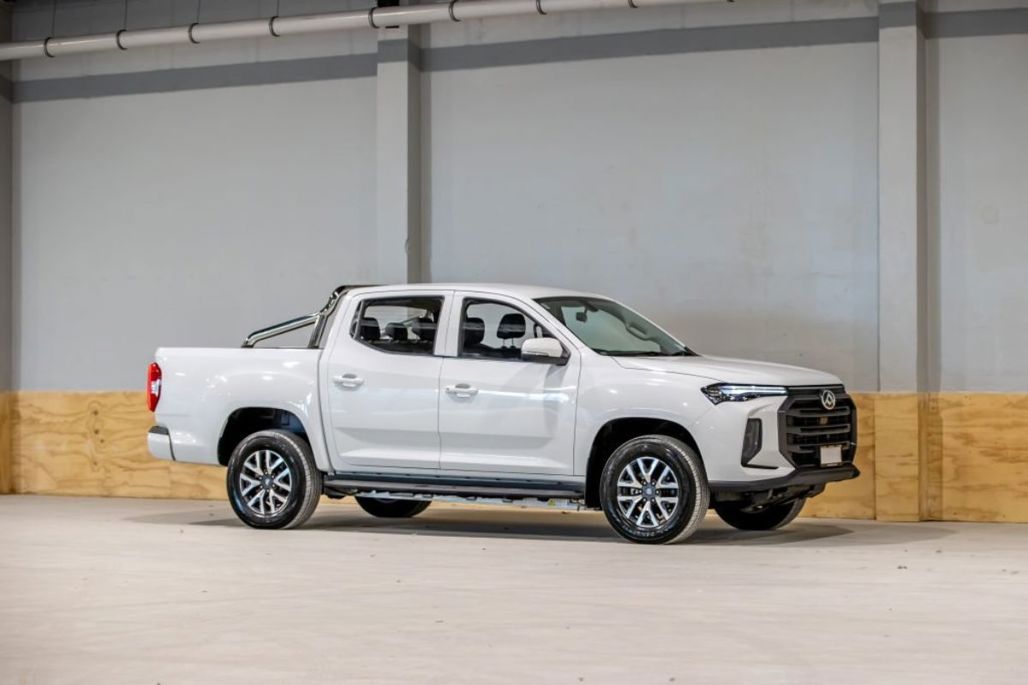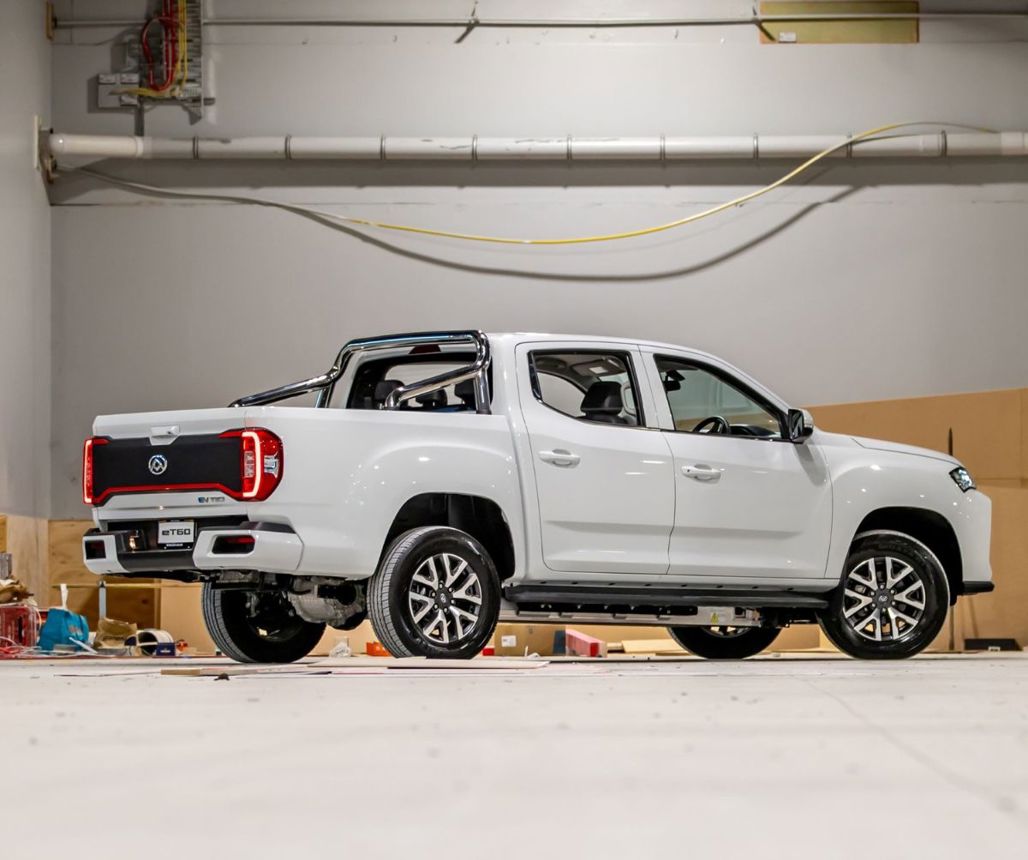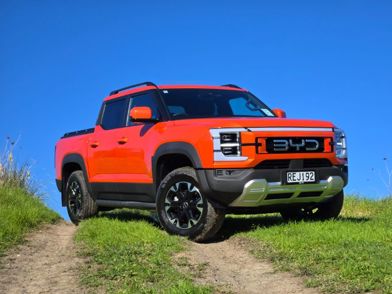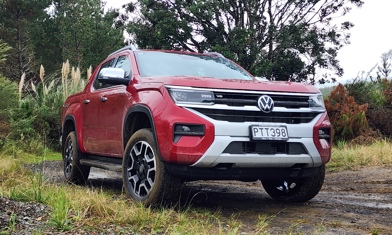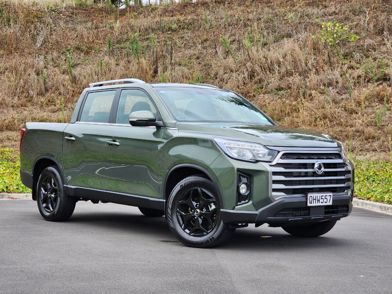Let’s get off on the right footing: the LDV eT60 EV ute presents itself as something of a work in progress, with some features that are troubling and others that are downright strange. It’s also in the last stages of its model life, with an all-new (and presumably much more sophisticated) model on the way in 2024.
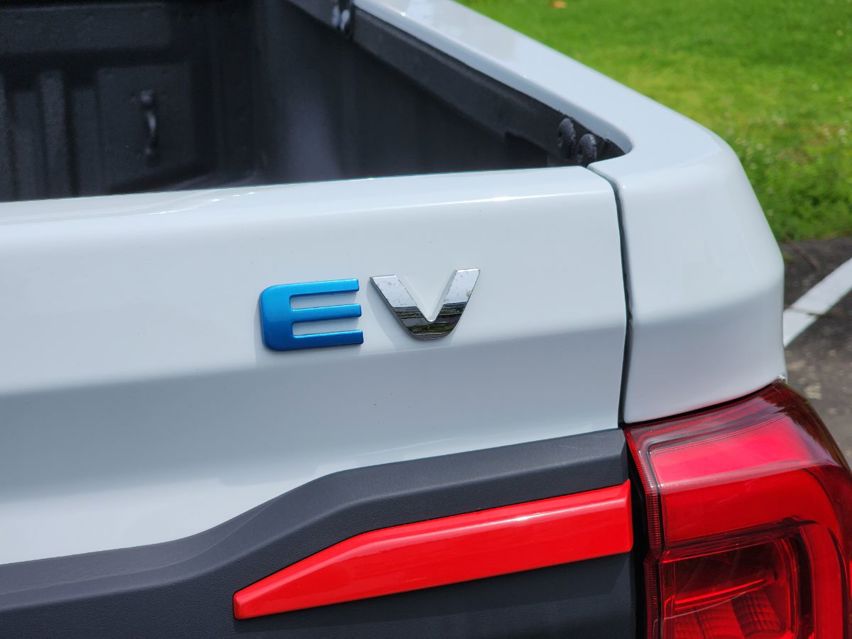
But credit where credit’s due: let the record books show that this was and will always be New Zealand’s first electric ute, launched right when we were all in a frenzy over big Clean Car fees for diesel double-cabs.
And while $79,990 was a hard sell for a fairly-crude-but-electric light commercial, a brand discount of $23,000 (hello!) and the current $7015 Clean Car Discount mean a real-world price of $49,975, which is actually cheaper than the top-spec T60 diesel.
Only until the end of the year mind, when all of the above goes away. But LDV NZ is kind of hoping all of its available eT60 stock will have gone away by then, too; our test vehicle is the last white one and already sold, apparently.
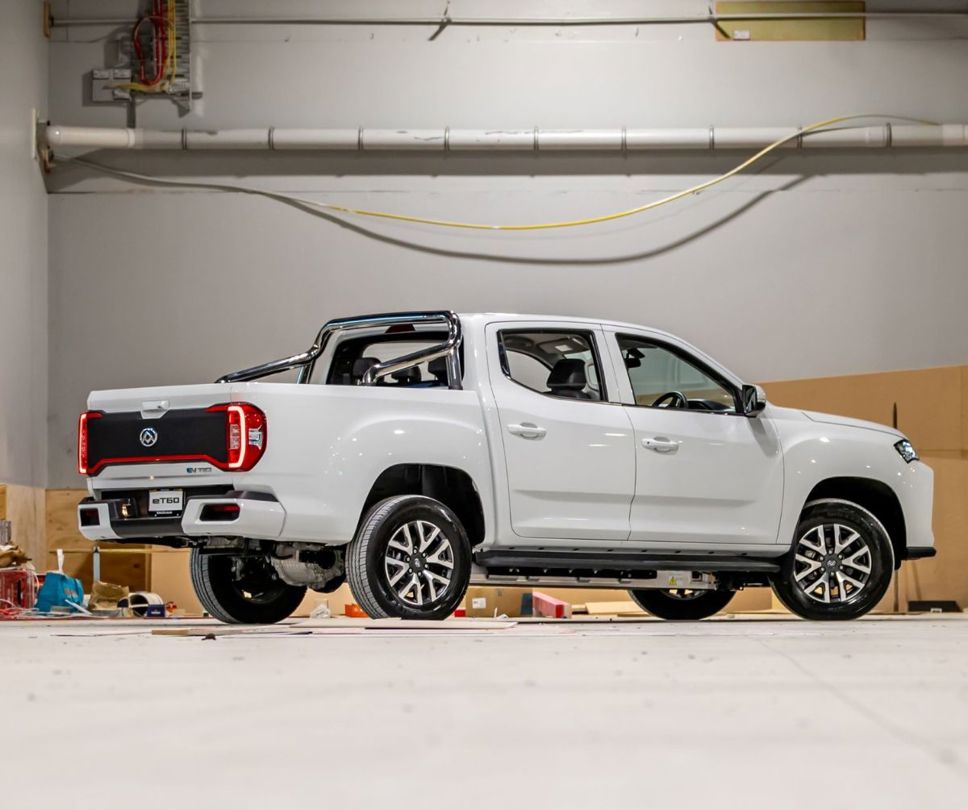
The eT60 is essentially a factory conversion of the diesel T60 to BEV power. Peer underneath and you’ll see the electric motor on the rear axle, the massive 89kWh battery mounted low, in-and-under the ladder-frame chassis (see the picture above). So ground clearance is really reduced, but then this is no 4x4: the eT60 is strictly RWD.
Think of this as a sub-$50k EV ute conversion with full factory backing and it could be quite appealing.
Peer under the bonnet and there’s a lot of wasted space. Would have been ideal for some kind of secure frunk… but LDV didn’t go that far. Even the charge port cover still has the mount for the fuel cap from the diesel model.
Inside, the dashboard is analogue and the charge indicator is simply a rebranded fuel gauge; nothing wrong with that and the cabin itself is actually pretty tidy and modern-looking, albeit made from hard materials. Again, nothing wrong with that in a sub-$50k light commercial.
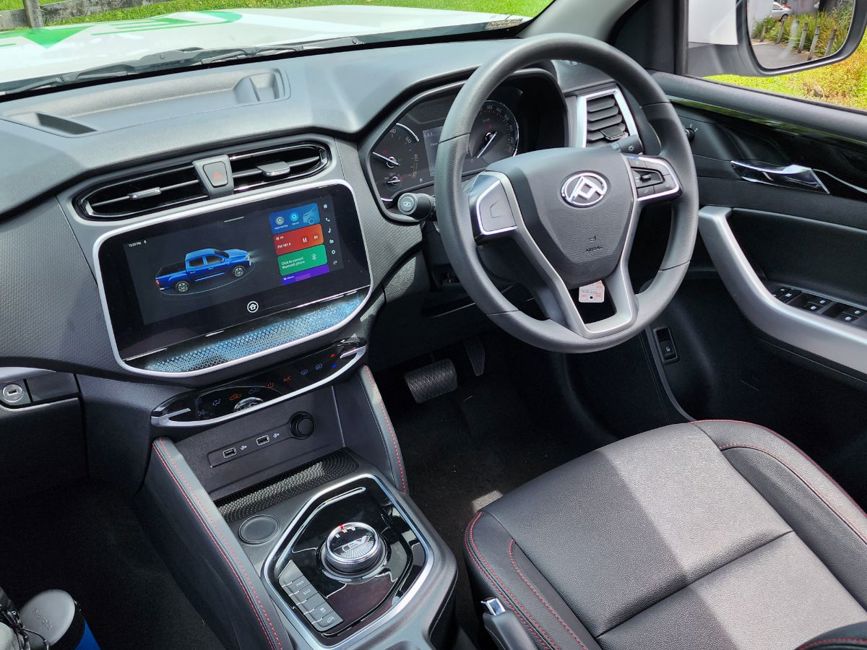
There’s a nice looking 10.25in digital infotainment screen, but nothing in there relating to electric operation: power flow, battery level or even charging information when it’s plugged in. In fact, the only way you know it’s charging is a tiny red light on the dashboard. As for when it’ll be finished charging? Dunno. Just check back later, maybe.
The hilariously loud spaceship noise at low speed would drown out any diesel engine.
If that all sounds like we’ve set out to slam the eT60, we haven’t. But it’s important context. Think of this as a sub-$50k EV ute conversion with full factory backing (8-year battery warranty, no less) and it could be quite appealing.
It’s decently smooth to drive, if far from quick. And very safe for pedestrians, because it makes a hilariously loud spaceship noise at low speed that we reckon would drown out any diesel engine.
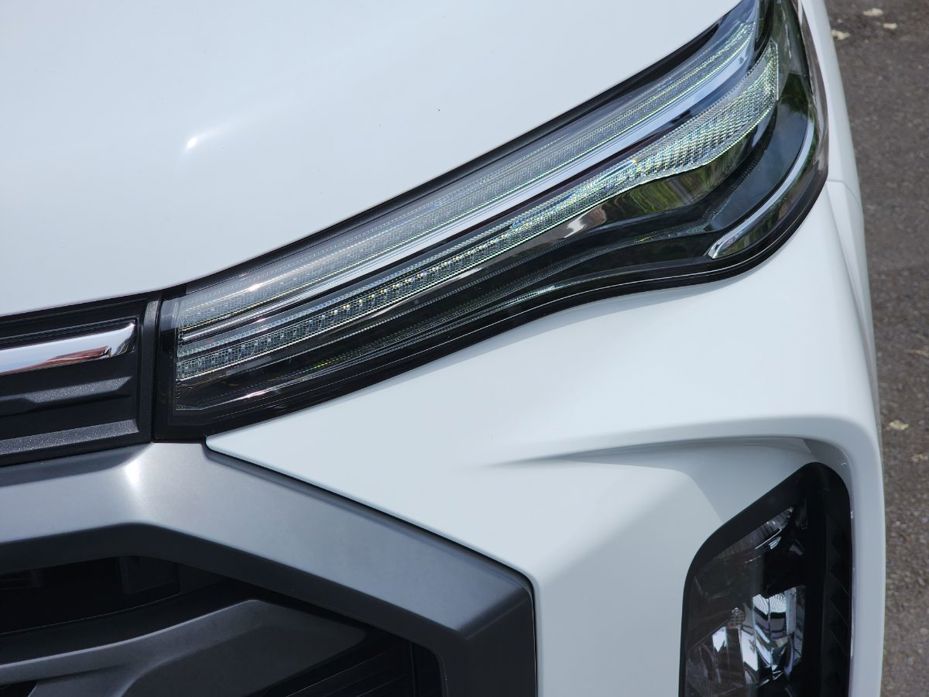
The T60 – any T60 – is not up with the likes of Ford Ranger or even the outgoing Mitsubishi Triton in terms of ride and handling. It responds predictably to the steering wheel and torquey EV wheelspin in the wet is well-contained by the traction control, but the ride is really rough at urban speeds and you do have to keep your mind on the job at motorway velocity.
The eT60 isn’t technically a one-tonne ute, because the payload is only 750kg. You know, like a Ford Ranger Raptor.
But the range is pretty good, as it should be with a big battery. The WLTP rating is 325km but our eT60 was regularly showing 400km-plus on the dashboard, even when we drove it in the least efficient Power mode; not that it felt a whole lot different to Normal or Comfort.
The gear selector is a rotary dial: nice and simple, click back and forth between Drive and Reverse. But even that has its quirks. To drive away you have to be really sure you’ve twisted the key right around in the ignition (yes, you put the key in the hole, old-school style) to power everything up before you can select Drive.
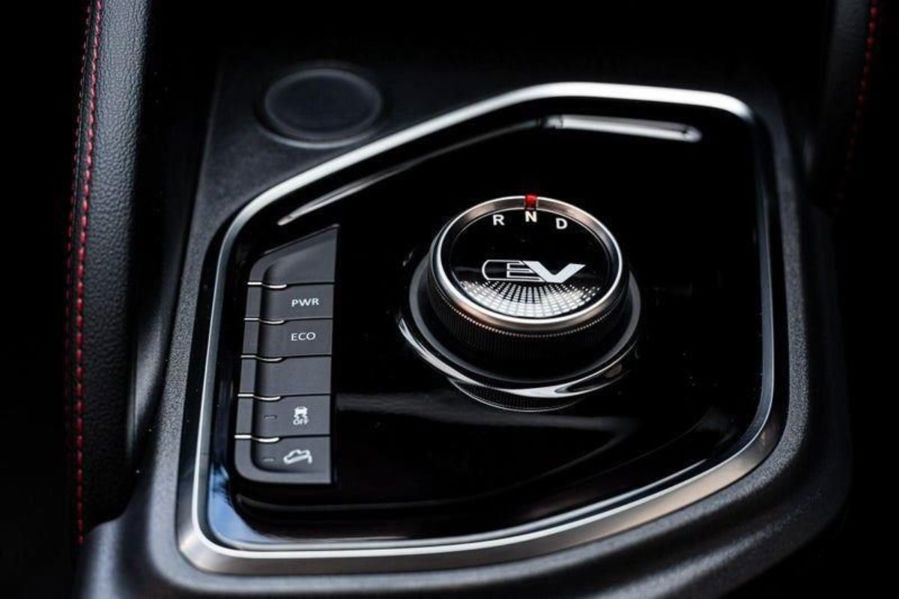
If you happen to be moving between Drive and Reverse, during a parking manoeuvre for example, you have to give the brake pedal a firm prod on the way through to ensure the next gear engages.
What’s truly strange is that there’s no Park setting (at least that we could find). You simply select Neutral, apply the manual handbrake and walk away.
As a ute, it has some useful stuff. Reversing camera and parking sensors are standard, power everything and keyless entry. It’s certainly not basic in terms of standard equipment.
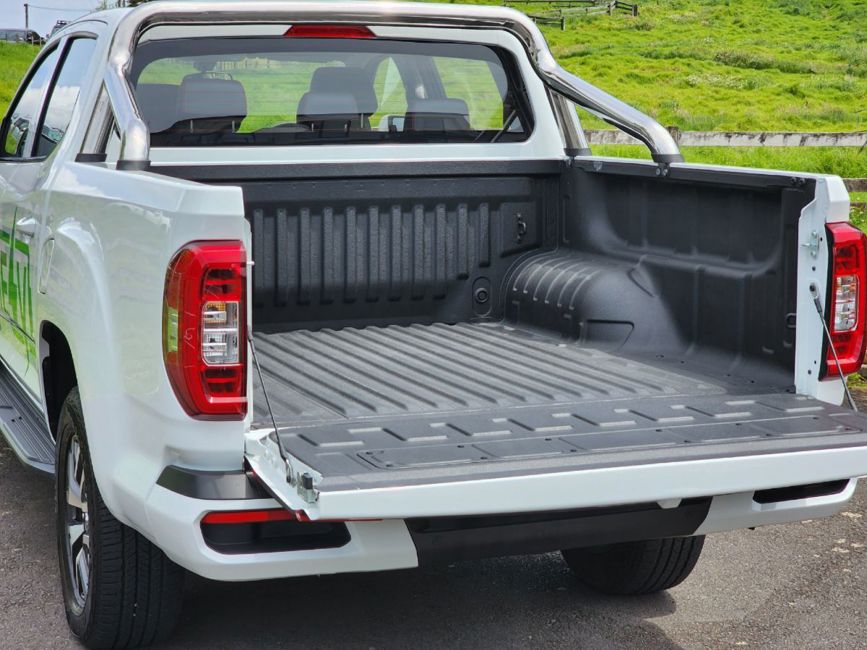
The tray comes lined with “industrial grade” coating and because the electric stuff is hanging underneath, there’s no compromise to the tray space compared to the diesel T60.
The eT60 isn’t technically a one-tonne ute, because the payload is only 750kg. You know, like a Ford Ranger Raptor. And towing is just 1500kg, which in turn will reduce the range by about 50 per cent; but that’s true for any EV towing anything.
The eT60 isn’t in any danger of displacing traditional diesel utes in terms of driveability or practicality, but it is still a pioneer, completely unique in the market and at the current price, not without its charm.
How much is the LDV eT60?
That’s a loaded question. The official retail is $79,990, but it’s on special for $56,990 until the end of 2023, and if sold within that timeframe it also qualifies for the $7015 Clean Car Discount. So it’s really $49,975... for now.
What are the key statistics for the LDV eT60 powertrain?
It’s pure electric; modest 130kW/310Nm power from the single electric motor (it’s rear-drive) but you get a large 89kWh battery.
Is the LDV eT60 efficient?
You can’t expect too much from a huge double-cab ute, but the WLTP range is 325km from the massive 89kWh battery. Around town we saw 400km-plus range, which would translate to around 23kWh/100km. Not bad for a vehicle like this.
Is the LDV eT60 good to drive?
Not really. The powertrain is smooth, but the ride and handling are decidedly average compared to mainstream utes like Toyota Hilux and Nissan Navara. Don’t even think about bringing the Ford Ranger into this.
Is the LDV eT60 practical for a ute?
You have to accept some limitations with the electric powertrain. It’s not an off-roader because it’s only RWD, but then there are plenty of other utes in that category too.
The tray is lined as standard (not always a given with utes) but the payload is a little down on the segment best at just 750kg. Nor does it tow a whole lot, although at 1.5t it’s still potentially useful for trailers and smaller boats.
What do we like about the LDV eT60?
It looks quite handsome in a ute way and you can get some nice colours (orange, bright blue, a fashion-conscious grey). Electric power is a unique selling point and at this price you can probably forgive the quirks.
What don’t we like about the LDV eT60?
The conversion to electric power is crude in places and we do worry a bit about the electric hardware hanging down below the vehicle, because some may be tempted to venture well off-tarmac. But the worst aspect of the eT60 is its bumpy ride; it’s a busy thing to travel in.
What kind of person would buy the LDV eT60?
Somebody who desperately wants a ute but also desperately wants to make a statement with pure-electric power. Or a small business that wants the image of a ute (not a van, in other words) but also wants to send a message about sustainability.
Or actually, just somebody who can’t pass up a sub-$50k price for a fully warrantied brand-new ute and figures: why not save big on the fuel bills too?

